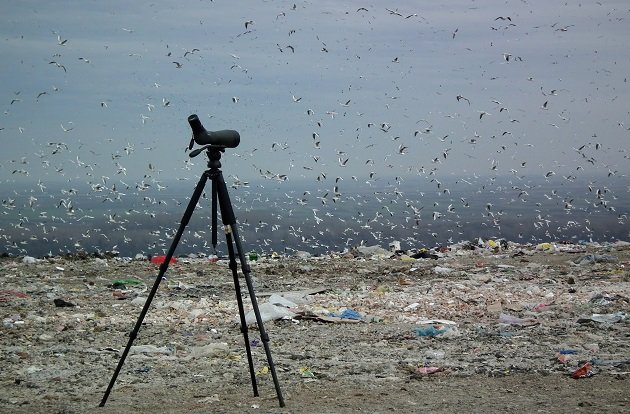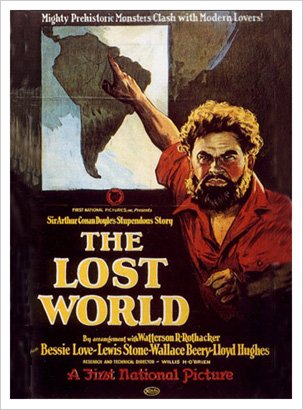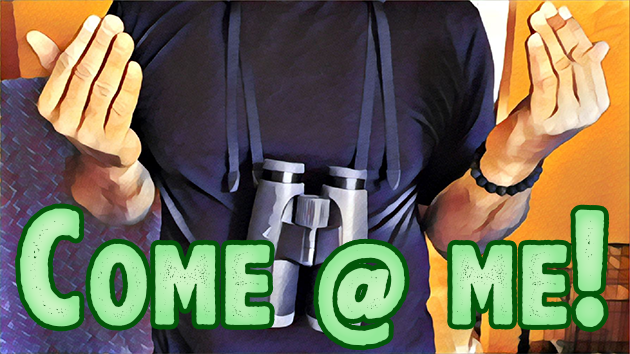
Who is eyeing gulls? I sure didn’t, for many years. Too simple. White and grey? Colouristically mediocre. Not even 60 species worldwide? Too easy. That small one is [now name the commonest small gull in your neighbourhood], while that big bully is [again, name the commonest big gull around] and more than 99 % of the time you will be right. So, where’s a sportsman’s challenge there?
My mind wandering off: A century ago, birding meant hunting birds and we stole the term from hunters – it may be time to steal another one:
“Lord John came abreast of me, however, and his face was more grave than was his wont. He had his Zeiss glasses in his hand.
“I focused it before it got over the trees,” said he. “I won’t undertake to say what it was, but I’ll risk my reputation as a sportsman that it wasn’t any bird that ever I clapped eyes on in my life.”
This was Sir Arthur Conan Doyle describing a pterodactyl sighting in 1912 in The Lost World – the original Jurassic Park. (In 2011 I tried to reach the marketing department of Zeiss to sell them the centenary campaign idea, but found deaf ears and no answer.)
Back to gulls. And gulling, as the art of observing them is known among connoisseurs. Here in the continental south of Europe, gulling season is definitively winter. The colder – the better. Yuck. I hate cold. And I spent long hours counting their afternoon flyovers towards roosting sites, up to 40,000 birds in a day, or more than 80,000 in a single month.
There are some 56-57 species worldwide which hardly presents a challenge. Yet, with many transitional plumages and world wanderers, the main fun comes from watching their heads and wingtips, several thousand heads and twice as many wingtips in order to find one odd bird. Just one odd bird that may or may not belong to some locally rarely observed species.
Let’s recount that – temperatures below zero, somewhat unpleasant wind, teary eyes glued to a spotting scope (with older models with metal oculars, one’s skin can be frozen to a scope), long hours watching large numbers of birds of perhaps 2 or 3 species that all look the same even to an experienced birder – because they are all the same, and there are people who are thrilled to do that? Without any payment, that is?
 Here, this is where we should search for gulls!
Here, this is where we should search for gulls!
That is not all. People infested with that gulling virus commonly visit rubbish dumps, all over the world. By general public, gulls are somewhat incorrectly known as “seagulls” (or, by tabloids, as “baby snatchers”). But you and I know better: there are rubbishgulls, landfillgulls, but most certainly no seagulls – there’s no food left in the sea. The available food is to be found at rubbish dumps. And my local rubbish dump must have five stars in gulls’ Michelin guide. Rubbish tourism?
Let’s recount it all again: temperatures below zero, wind and teary eyes, long hours watching large number of identical looking birds enveloped in a stench of a rubbish dump and some people do not only call it birding, but even enjoy it?
The fact is, people do not understand gulls. Even worse, birders rarely understand gulls. Because they think of them as birds. Which is clearly wrong. I have a herpetologist friend who is an expert on gulls. And it comes naturally to him. Simply, gulls occupy the same ecological niche as those Lord John’s pterodactyls, and they behave pretty much the same. In order to understand them, one needs to see them not as birds, but flying dinosaurs. Only then everything fits to its place.
So, what do we have here? A pair of pink feet? Ten more pairs of pink feet? A thousand more pairs? How do you call people who carefully observe thousands of pink legs only to find some that are adorned with plastic bijouterie?
Exactly – weirdos.
*****

Come@Me Week is a cheap ploy ginned up by some high priced consultants we at 10,000 Birds hired and then stiffed on the bill. We’re desperately trying to stay relevant in a bird blogosphere being decimated by Facebook, Twitter, Instagram, and memes. We here at 10,000 Birds have no shame and it was either this or lots of posts about woodcocks, boobies, and woodpeckers. All the posts in Come@Me Week are probably the opinions of the authors of said posts and no one else. Well, except maybe you. Weirdo. Agree? Disagree? We’ll see you in the comments. Or, more likely, on Facebook. Sigh…













I thought these posts were supposed to be controversial.
From FB, had to share: by Graham Floyd
Me: Honey, let’s go to Japan!
Wife: No
Me: Why not?
Wife: I don’t want to see Japan’s landfills while you go birding.
Me: …
Also FB, by Stuart Gillies: Not watching gulls is weird.
FB, by James Hogg: I always seem to end up at a sewage lagoon on my holidays